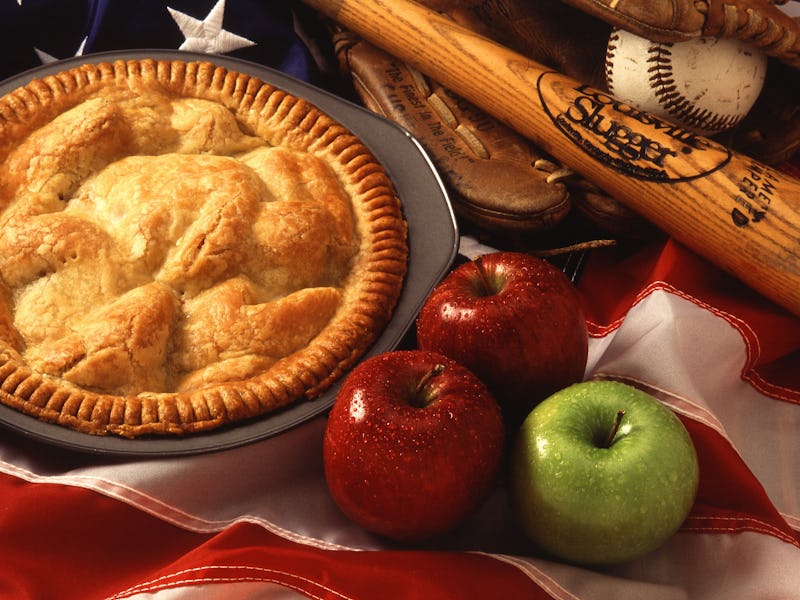Why Apple Pie Isn’t Really American
Your favorite Fourth of July treat isn't from around here.

The three things you need to get patriotic on the Fourth of July: baseball, Bud Light, and apple pie. At least that’s what I was taught when I made the move south from Canada. And two of those things are definitely Forrest Gump-level America. But the third thing isn’t. Apple pie is the most popular pie choice in the U.S. and isn’t as American as itself. It’s naturalized, sure, but it ain’t from around here.
Long before the colonies were even settled, apple pies were being baked in Europe. The Brits were baking apples into pies known as “coffins” as far back as the late 14th century. Granted, the crust itself was inedible and mostly meant to preserve the fruit inside, but such are the humble origins of baking and such is the nature of English cooking. Factor in the Dutch apple pie, Swedish apple pie, and the German apple strudels, and you’ve got a long list of European forebears to acknowledge.
The apple didn’t even appear in the New World until the colonists brought over seeds in the 1600s. When it comes to apples becoming American, Massachusetts has two claims to fame: The Commonwealth grew the country’s first apple orchard in 1625, and it gave birth to Johnny “Appleseed” Chapman, who wove the apple into American folklore by planting trees all over the country. Those apples weren’t meant to baked into pies, however — they were bound for the hard cider mill. Appleseed, who has been referred to as the “American Dionysus”, wasn’t the green-thumbed sower you were taught about in grade school; dude was a drunk.
By the 1700s, pioneers in Pennsylvania had brought over British recipes for apple pie. The dessert quickly began to weave itself into the fabric of American life — to the point that when the first all-American cookbook, American Cookery, published an apple pie recipe in 1798, its authors didn’t even bother to mention its European roots. But what finally propelled the association into national consciousness was yellow journalism and clever war propaganda. In 1902, an impassioned New York Times editor responded to a British writer claiming that Americans should cut down on pie eating:
Pie is the American synonym of prosperity and its varying contents of the calendar of the changing seasons. Pie is the food of the heroic. No pie-eating people can ever be permanently vanquished.
Fellow citizens took this nationalistic sentiment to heart. By the time World War II rolled around, soldiers asked what they were fighting for would frequently answer, “for mom and apple pie.”. It’s not clear whether the phrase “as American as apple pie” was in the lexicon before then, but we do know that there was a huge upswing after the 1960s. Cue Don McLean, his amazing 1975 Chevy ad, and, of course, Jim’s intimate moment with the beloved dessert.
Today, apple pie is still one of the most popular desserts in the country. And after years of being passed around and repurposed, it’s become more than just another Fourth of July treat — it’s become a brand synonymous with patriotism, stability, and family life. And that brand, unlike the historic pastry at its heart, is without a doubt, even to an outsider like me, 100 percent American.
But the pie isn’t.